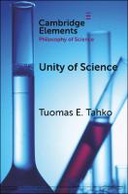Explore

Unity of science was once a very popular idea among both philosophers and scientists. But it has fallen out of fashion, largely because of its association with reductionism and the challenge from multiple realisation. Pluralism and the disunity of science are the new norm, and higher-level natural kinds and special science laws are considered to have an important role in scientific practice. What kind of reductionism does multiple realisability challenge? What does it take to reduce one phenomenon to another? How do we determine which kinds are natural? What is the ontological basis of unity? In this Element, Tuomas Tahko examines these questions from a contemporary perspective, after a historical overview. The upshot is that there is still value in the idea of a unity of science. We can combine a modest sense of unity with pluralism and give an ontological analysis of unity in terms of natural kind monism.
This book is included in DOAB.
Why read this book? Have your say.
You must be logged in to comment.
Rights Information
Are you the author or publisher of this work? If so, you can claim it as yours by registering as an Unglue.it rights holder.Downloads
This work has been downloaded 118 times via unglue.it ebook links.
- 118 - pdf (CC BY-NC-ND) at OAPEN Library.
Keywords
- Humanities
- levels of nature
- Mathematics & science
- Metaphysics
- metaphysics of science
- natural kinds
- Philosophy
- philosophy of science
- Philosophy: metaphysics & ontology
- réalisation
- Reduction
- Science: general issues
- thema EDItEUR::P Mathematics and Science::PD Science: general issues::PDA Philosophy of science
- thema EDItEUR::Q Philosophy and Religion::QD Philosophy::QDT Topics in philosophy::QDTJ Philosophy: metaphysics and ontology
- Unity
Links
DOI: 10.1017/9781108581417Editions

